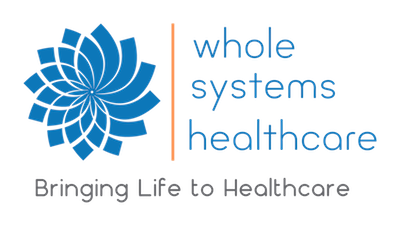Who doesn’t love a good headache? If you’ve ever been to the doctor about a headache, you might have heard of the different types of headaches according to biomedicine. However, headaches can also be understood through Chinese Medicine, which can often be a more helpful way to approach these dreaded occurrences. Let’s examine the biomedical headaches first.
Biomedical Headaches
Tension-Type Headache
As the most common type of headache many people are familiar with this one. There’s a pressing, tight, aching, or full sensation, and the pain is typically at the back of the head, at the temples on both sides, and/or in the front. Often these headaches are accompanied by tension or pain in the neck and shoulder muscles. Often worse with stress, these headaches can last just minutes, or go on for days at a time.
There are a few interesting facts about these headaches. One is that people with chronic tension-type headaches tend to have lower levels of cortisol, possibly from chronic stress. Another is that people with these types of headaches tend to have relatively weaker neck extension muscles (the ones that tilt the head backwards).
Migraine Headache
Also common, migraines can be incredibly debilitating, and can last for days. The pain is typically more throbbing or pulsating in nature, and can also be sharp or stabbing. Most commonly the pain is only on one side, around or behind the eye, around the temple, or on the side of the head. However, pain can be felt anywhere in the head and neck area. There is often nausea, sometimes vomiting, and sometimes sensitive to light, sound, or other stimuli. Various migraine triggers have been recorded, such as stress, medications, smoking, hormonal changes, fasting, changes in weather, certain foods, and others.
Interesting things about migraines center mostly on the various neurological signs. The visual aura that precedes a migraine is well-known, but of course doesn’t happen to everybody. Other’s include reddening of the conjunctiva (pink-eye), rapid or slowed heart rate, paralysis or weakness on one side, fainting, balance problems, difficulty speaking, or pupillary changes.
Cluster Headache
These headaches are much shorter, and can happen multiple times per day. They’re always one-sided, either behind the eye, above the eye, or near the temple. The pain is often sharp or stabbing. Additional symptoms could include redness of the eye, tearing, congestion, nasal discharge, forehead and facial sweating, pupil changes, or eyelid edema.
Biomedicine doesn’t understand these headaches as well, though there is some evidence that histamine plays a role.
Chinese Medicine Headaches
If you’re not familiar with the six conformations you can brush up by reading my earlier post.
Taiyang Headache
There is remarkable overlap between tension headaches and Taiyang headaches. Taiyang is cold, and these headaches feel tight and constricted, often with accompanying neck and shoulder pain and tension. They tend to follow the path of the Taiyang sinew channels, the Bladder and Small Intestine. Often the tension can be felt creeping from the back up the neck, over, and around the head, but especially at the back of the head. The neck and upper back tighten up, as if to ward off a cold wind by hunching the shoulders and pulling the head down. The weakness of the extensor muscles that has been noticed by biomedicine is reflected here in weakness of the Taiyang sinews.
The root of the Taiyang is the Shaoyin, which corresponds (in part) to the kidney/adrenal complex. Therefore it is intriguing that chronic tension headache sufferers have low cortisol, a sign of adrenal fatigue. Perhaps this is a manifestation of Shaoyin weakness at the biomedical level.
Taiyang headaches need to be warmed up. This is why hot showers often feel good. Putting a hot pack on the back of the neck, taking warming herbs like cinnamon, getting in a hot bath, etc. Cold at the level of the body corresponds to fear, and the antidote is courage. When stress has you tightening up your neck to ward off danger, you need something that helps you stand up straight, stand your ground, and assert yourself. This is the role of the Taiyang.
Shaoyang Headache
Shaoyang headaches are typically pounding, throbbing, and one-sided, around the eye, temple, or side of the head. Some migraines definitely fall into this category, and cluster headaches might as well. Shaoyang arises from metabolic heat that has become obstructed, creating an blockage in the free flow of Qi. This blockage in the Qi is why these types of headaches can include nausea or vomiting. Other Shaoyang symptoms are feelings of alternating hot and cold, irritability, depression, anxiety, abdominal pain, bitter or metallic taste in the mouth, dry throat, and “dizzy” vision. There can be stabbing pain, especially around or behind the eye, which indicates the Qi obstruction has caused some Blood stagnation.
Shaoyang headaches need to be moved. Herbs that move the digestion and stimulate the Gallbladder can help alleviate the headache. Regular exercise helps keep the Qi moving and prevents these types of headaches. The role of the Shaoyang is to be flexible, and when rigidity sets in we need techniques to help us shake out the kinks.
The root of Shaoyang is Jueyin, and most people with chronic Shaoyang headaches have a weakness in the Jueyin, the realm of Blood. Once the Qi obstruction is cleared away there may be some underlying Blood deficiency which will need to be nourished to prevent the headaches from returning.
Yangming and Taiyin Headache
This headache is felt in the front of the head, across the forehead area. It feels dull, heavy, or pressing, and it can be accompanied by brain fog or muddled thinking. Headaches from sinus congestion are also of this type. Headaches from dehydration that occur in this area also fall into Yangming. The headache could be accompanied by abdominal symptoms, such as pain, fullness, or constipation.
If the pain is due to dehydration drinking more water will help. The pain can also come from damp or phlegm, in which case treatment needs to be directed towards “digesting” this damp accumulation. Herbs that work with the stomach and increase digestive power can be very helpful. If there is dryness in the intestines that needs to be purged giving laxatives will help.
The root of Yangming is Taiyin, and these types of headaches are typically rooted in weak digestion. If the digestion is weak undigested “mucus,” or damp, will build up and create feelings of heaviness, pressure, and dull pain. Strengthening the digestion is necessary to fully resolve the problem.
Shaoyin Headache
A headache of this type is typically felt deep inside the skull, and has an empty quality, as if the skull is empty. It is typically accompanied by significant fatigue and either excessive sleeping or insomnia. A person with this headache is very run down and has almost certainly been working beyond their capacity for a long time.
Shaoyin headaches need tonification. Eating nourishing foods, resting, and taking herbs that replenish the body are all ways in which to heal and rejuvenate.
Jueyin Headache
Classically, Jueyin headaches are felt at the very top of the head. A dull headache without feelings of tension or throbbing, Jueyin headaches can be due to Blood deficiency. This dull sensation can be anywhere, and often manifests on the sides of the head instead of the top. Jueyin headaches can also have more intense symptoms, and chronic migraines often fall into this category. Headaches that look like Shaoyang, with throbbing one-sided pain, or stabbing pain, nausea, and vomiting, can really be Jueyin in nature.
Because Jueyin pathologically is separation of Yin and Yang treatments to reconnect Yin and Yang and stabilize the body are necessary. Herbal formulas for this condition tend to be complex, focusing on both astringing the floating Yang as well as tonifying Yin and Yang to hold the energy in the body. Nourishing the Blood may also be necessary as part of the strategy.
Since every person is unique, no headache treatment is going to be the same for everybody. Each person brings their life experiences and circumstances with them. No matter the type of headache, you have the power to completely heal, not just manage symptoms or take pain medication.



